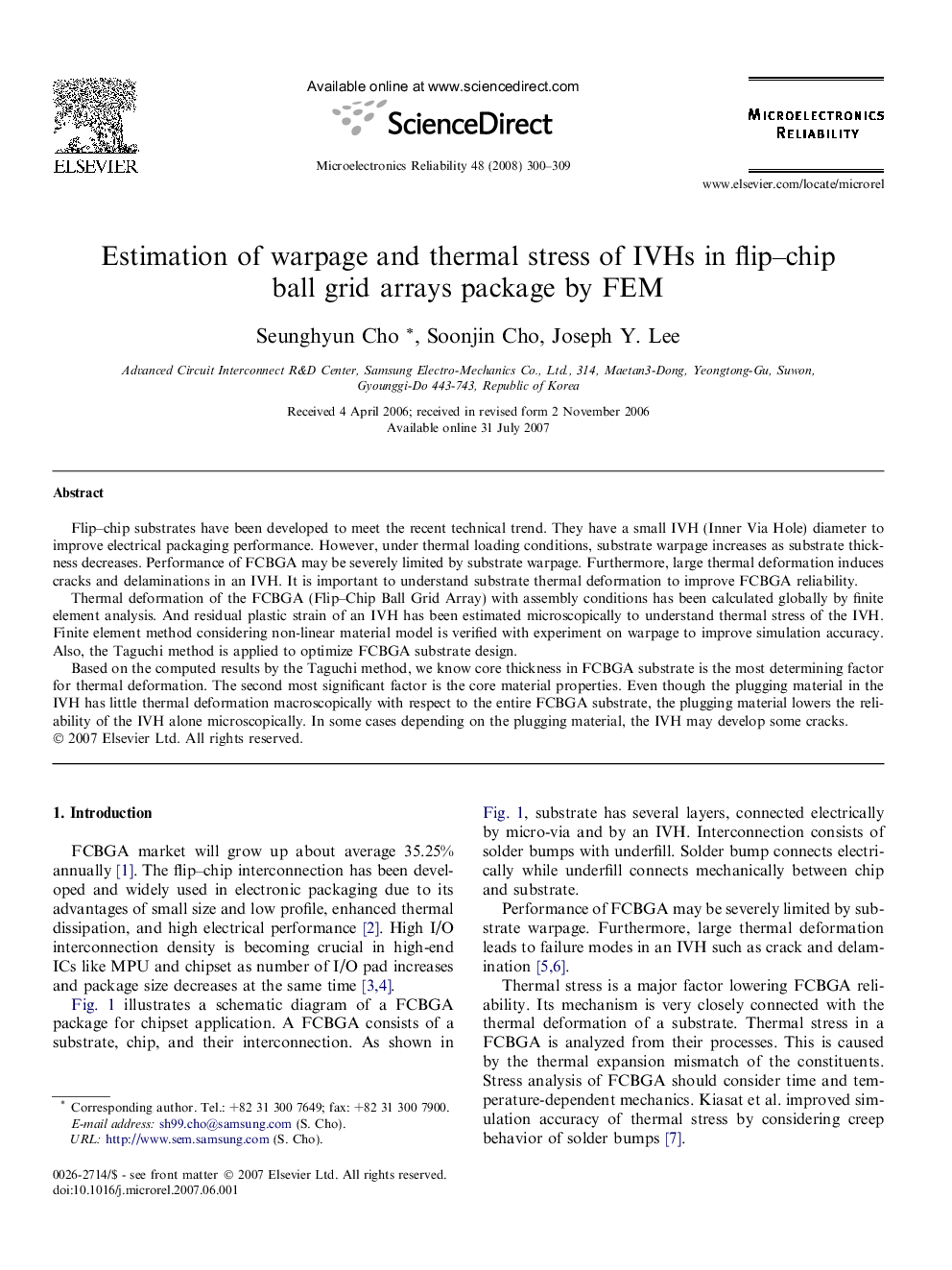| Article ID | Journal | Published Year | Pages | File Type |
|---|---|---|---|---|
| 546152 | Microelectronics Reliability | 2008 | 10 Pages |
Flip–chip substrates have been developed to meet the recent technical trend. They have a small IVH (Inner Via Hole) diameter to improve electrical packaging performance. However, under thermal loading conditions, substrate warpage increases as substrate thickness decreases. Performance of FCBGA may be severely limited by substrate warpage. Furthermore, large thermal deformation induces cracks and delaminations in an IVH. It is important to understand substrate thermal deformation to improve FCBGA reliability.Thermal deformation of the FCBGA (Flip–Chip Ball Grid Array) with assembly conditions has been calculated globally by finite element analysis. And residual plastic strain of an IVH has been estimated microscopically to understand thermal stress of the IVH. Finite element method considering non-linear material model is verified with experiment on warpage to improve simulation accuracy. Also, the Taguchi method is applied to optimize FCBGA substrate design.Based on the computed results by the Taguchi method, we know core thickness in FCBGA substrate is the most determining factor for thermal deformation. The second most significant factor is the core material properties. Even though the plugging material in the IVH has little thermal deformation macroscopically with respect to the entire FCBGA substrate, the plugging material lowers the reliability of the IVH alone microscopically. In some cases depending on the plugging material, the IVH may develop some cracks.
